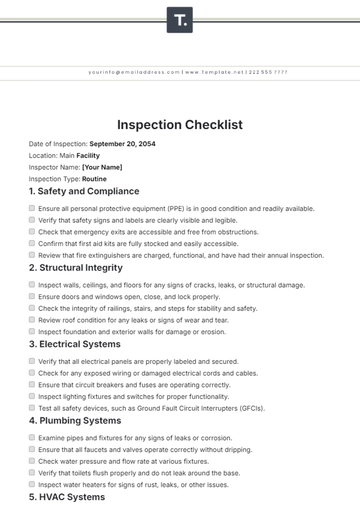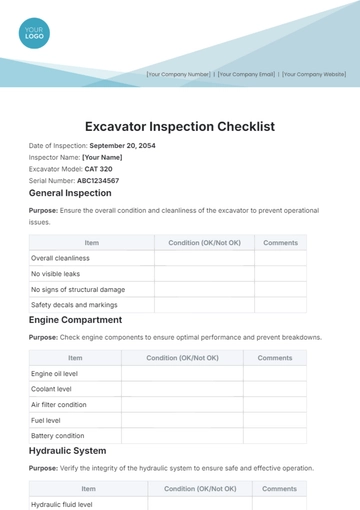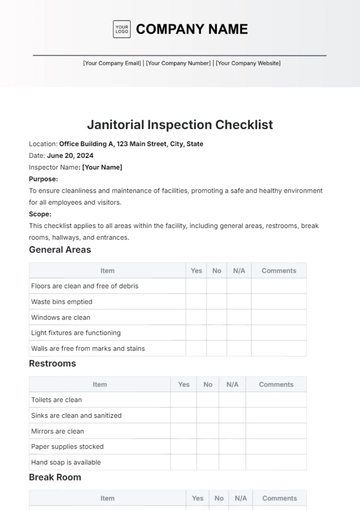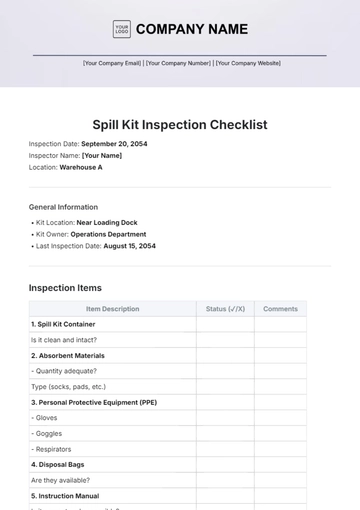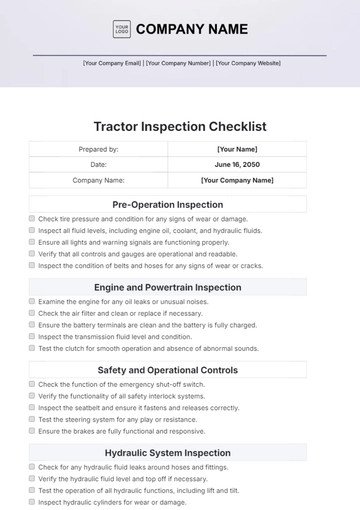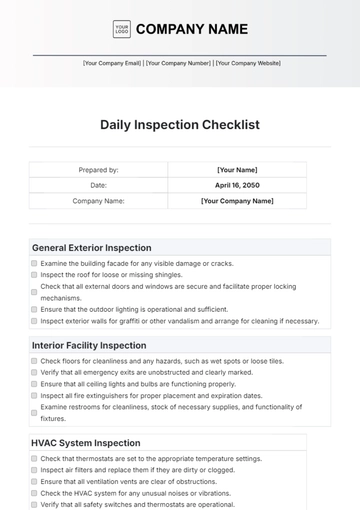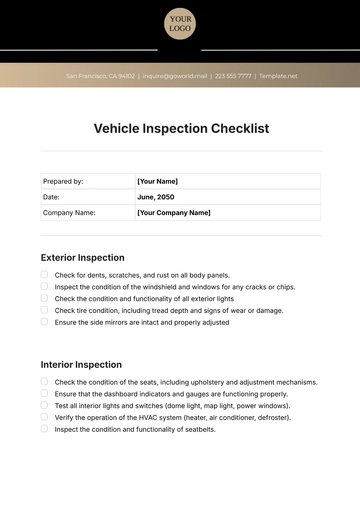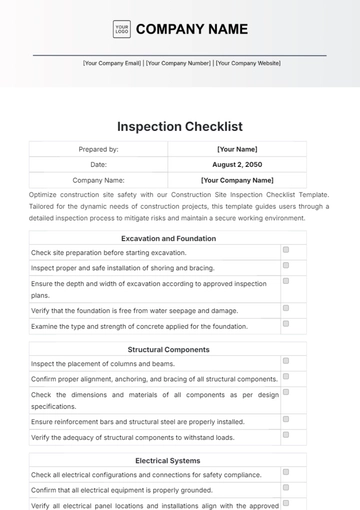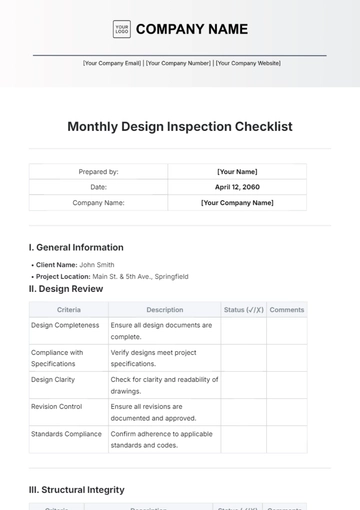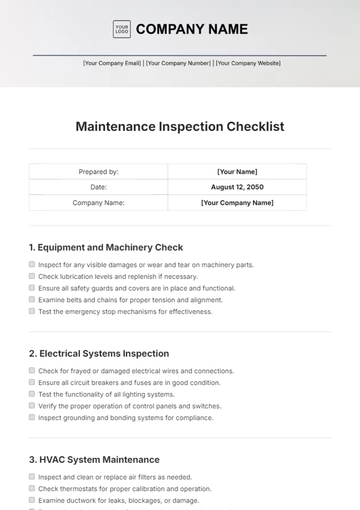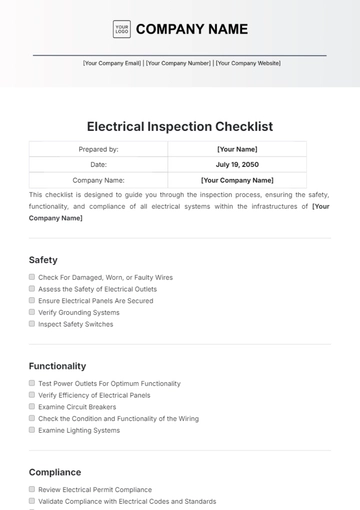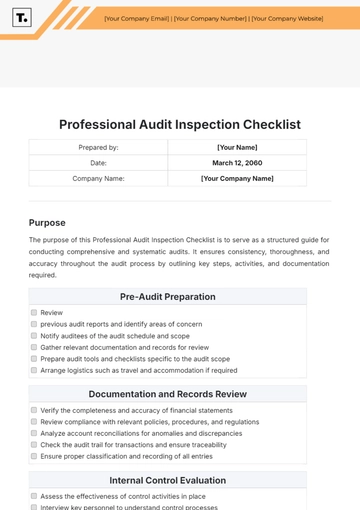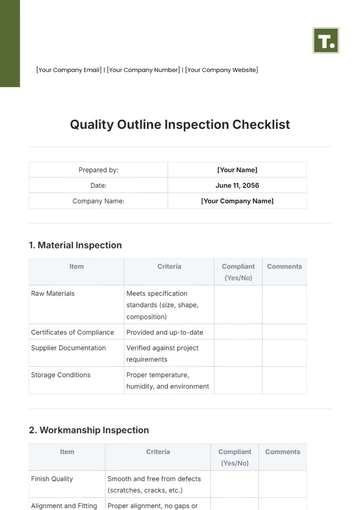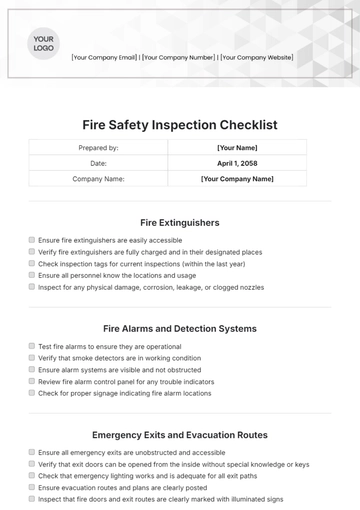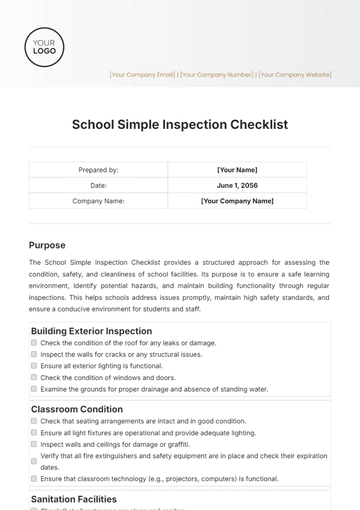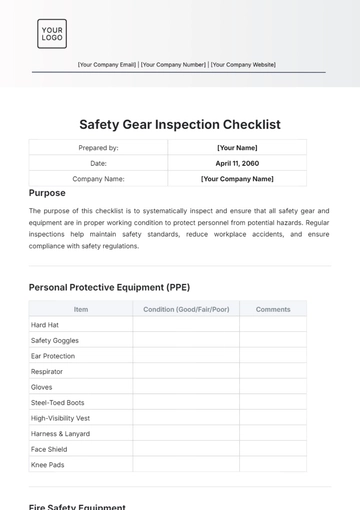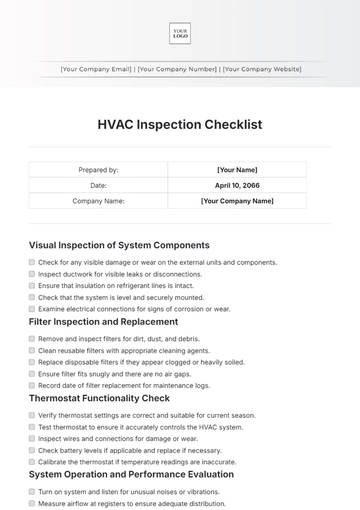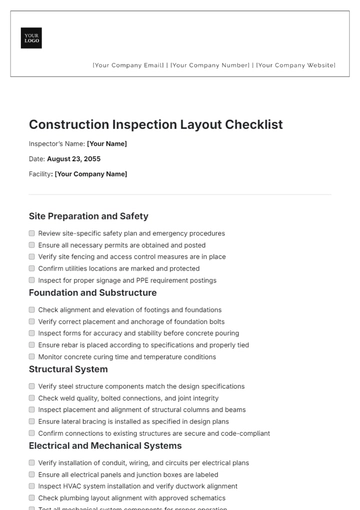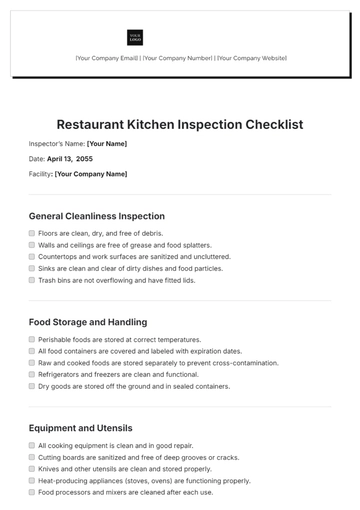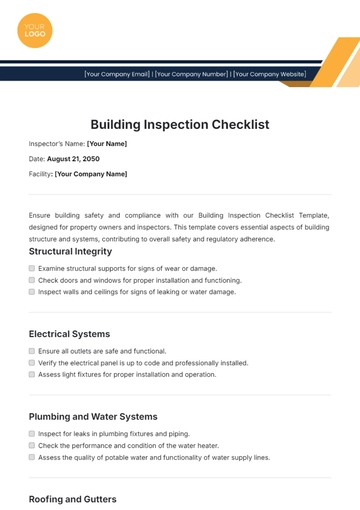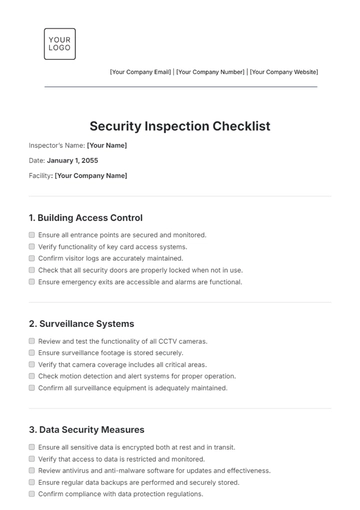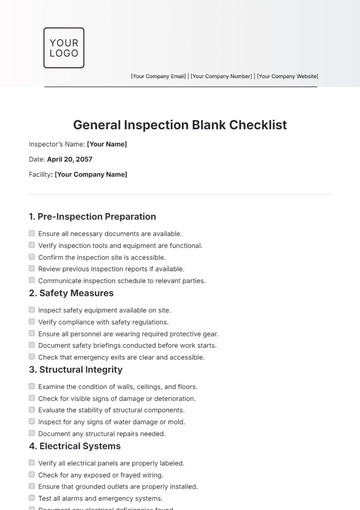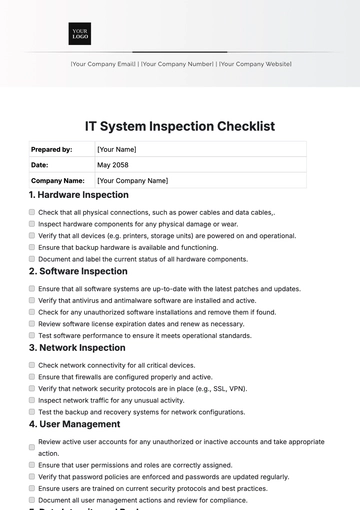Free Surgical Site Checklist
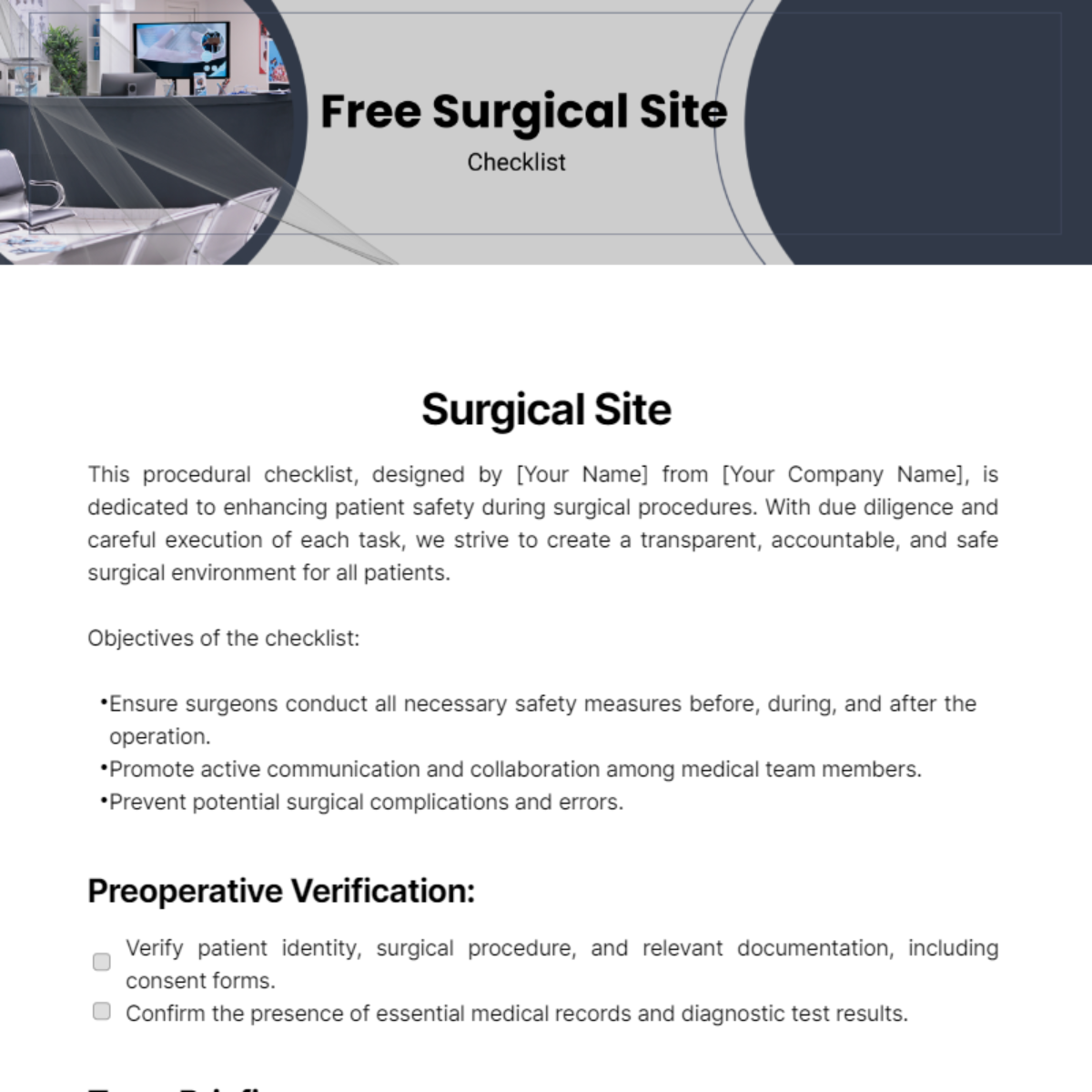
This procedural checklist, designed by [Your Name] from [Your Company Name], is dedicated to enhancing patient safety during surgical procedures. With due diligence and careful execution of each task, we strive to create a transparent, accountable, and safe surgical environment for all patients.
Objectives of the checklist:
Ensure surgeons conduct all necessary safety measures before, during, and after the operation.
Promote active communication and collaboration among medical team members.
Prevent potential surgical complications and errors.
Preoperative Verification:
Verify patient identity, surgical procedure, and relevant documentation, including consent forms.
Confirm the presence of essential medical records and diagnostic test results.
Team Briefing:
Conduct a comprehensive briefing with the surgical team to review the surgical plan, roles, and responsibilities.
Address any concerns or specific considerations related to the patient or procedure.
Time-Out Procedure:
Perform a "time-out" just before the start of the surgery to reconfirm patient identity, surgical site, and the planned procedure.
Ensure alignment among team members regarding critical details.
Equipment and Instrument Check:
Verify the availability and functionality of all surgical instruments and equipment.
Confirm that all necessary supplies, including implants and prosthetics, are readily accessible.
Sterility Confirmation:
Ensure the integrity and sterility of surgical drapes, gowns, gloves, and all other items within the sterile field.
Confirm that sterile technique is maintained throughout the procedure.
Anesthesia Check:
Verify the anesthesia plan, including the type and dosage of anesthesia to be administered.
Confirm patient positioning and airway management procedures.
Critical Events and Contingencies:
Review potential critical events or complications that may arise during the surgery.
Discuss contingency plans and ensure the team is prepared to address unexpected challenges.
Surgical Site Marking:
Ensure that the surgical site is correctly marked before the procedure.
Verify that the marking is visible, in the correct location, and in alignment with the surgical plan.
Postoperative Considerations:
Discuss postoperative care instructions, including pain management and any specific recovery measures.
Confirm the plan for postoperative monitoring and follow-up assessments.
Communication with the Recovery Team:
Establish clear communication channels with the postoperative recovery team.
Provide a detailed handover of relevant information, including any unexpected events during the surgery.
Documentation and Record Keeping:
Maintain accurate documentation of the entire surgical site checklist process.
Record any deviations, issues, or additional considerations for future reference and quality improvement.
Patient and Family Communication:
Communicate with the patient and their family regarding the successful completion of the checklist.
Address any questions or concerns they may have about the upcoming surgery.
Environmental Control:
Ensure the operating room environment meets established standards for temperature, humidity, and air quality.
Confirm the availability of necessary tools for infection prevention, such as antimicrobial skin preparations.
Postoperative Debriefing:
Conduct a postoperative debriefing session with the surgical team to review the procedure.
Encourage open communication for continuous improvement and shared learning.
Continuous Training and Education:
Implement ongoing training and education programs for the surgical team to stay updated on best practices.
Foster a culture of continuous improvement and commitment to patient safety.
- 100% Customizable, free editor
- Access 1 Million+ Templates, photo’s & graphics
- Download or share as a template
- Click and replace photos, graphics, text, backgrounds
- Resize, crop, AI write & more
- Access advanced editor
Enhance surgical precision with Template.net's Surgical Site Checklist Template. Exclusively designed for medical professionals, this editable and customizable template ensures thorough preoperative procedures. It's seamlessly editable in our Ai Editor Tool, offering a streamlined approach to patient safety and surgical excellence. Trust in our expertly crafted tool for impeccable surgical preparation.
You may also like
- Cleaning Checklist
- Daily Checklist
- Travel Checklist
- Self Care Checklist
- Risk Assessment Checklist
- Onboarding Checklist
- Quality Checklist
- Compliance Checklist
- Audit Checklist
- Registry Checklist
- HR Checklist
- Restaurant Checklist
- Checklist Layout
- Creative Checklist
- Sales Checklist
- Construction Checklist
- Task Checklist
- Professional Checklist
- Hotel Checklist
- Employee Checklist
- Moving Checklist
- Marketing Checklist
- Accounting Checklist
- Camping Checklist
- Packing Checklist
- Real Estate Checklist
- Cleaning Checklist Service
- New Employee Checklist
- Food Checklist
- Home Inspection Checklist
- Advertising Checklist
- Event Checklist
- SEO Checklist
- Assessment Checklist
- Inspection Checklist
- Baby Registry Checklist
- Induction Checklist
- Employee Training Checklist
- Medical Checklist
- Safety Checklist
- Site Checklist
- Job Checklist
- Service Checklist
- Nanny Checklist
- Building Checklist
- Work Checklist
- Office Checklist
- Training Checklist
- Website Checklist
- IT and Software Checklist
- Performance Checklist
- Project Checklist
- Startup Checklist
- Education Checklist
- Home Checklist
- School Checklist
- Maintenance Checklist
- Planning Checklist
- Manager Checklist
- Wedding Checklist
- Vehicle Checklist
- Travel Agency Checklist
- Vehicle Inspection Checklist
- Interior Design Checklist
- Backpacking Checklist
- Business Checklist
- Legal Checklist
- Nursing Home Checklist
- Weekly Checklist
- Recruitment Checklist
- Salon Checklist
- Baby Checklist
- Equipment Checklist
- Trade Show Checklist
- Party Checklist
- Hospital Bag Checklist
- Evaluation Checklist
- Agency Checklist
- First Apartment Checklist
- Hiring Checklist
- Opening Checklist
- Small Business Checklist
- Rental Checklist
- College Dorm Checklist
- New Puppy Checklist
- University Checklist
- Building Maintenance Checklist
- Work From Home Checklist
- Student Checklist
- Application Checklist
